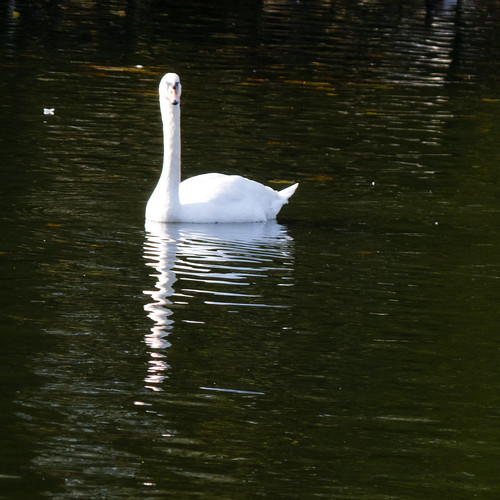Rat which came out from the shelter of vegetation in West Park. It scuttled across open ground, and stretched out to the lake for a quick drink.
OlBlue Eyes Is Back
Avon at Stratford, misty morning
Looking downstream along the River Avon at Stratford, with the riverside church looming out of the mist.
The pictures I post here have normally only had the most limited of digital editing: colour adjustment (including the occasional black and white); spot removal, and cropping.
This picture is the exception. A nearby gull intruded one out of focus wing into the left of the picture as it flew overhead. I had to use cloning to restore the continuity of the willow foliage to the left of the church.
Magpie inkcap, castle ruins
Going: magpie inkcap part-deliquesced
Magpie inkcaps, striking black and white mushrooms, are mainly found in southern England, and are not particularly common even there.
Some appear in the autumn in the grounds of Bridgnorth castle. I got quite enthusiastic about taking pictures on visits in mid-November. I don’t know if they are still there – they were showing up to the first week in December last year.
















